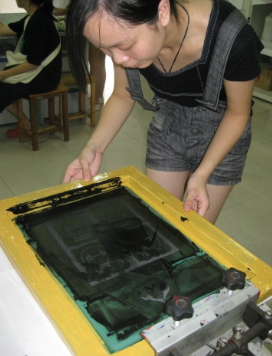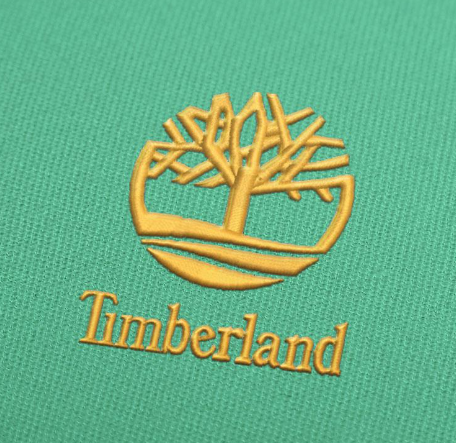For logo process, we can do silk screen printing, embroidery, silicone printing, heat transfer, woven label, silicone stamp and other processes.
Logo On Ready Made Item
Sansan Sports is a manufacturer specializing in the production of men's and women's sportswear and activewear.
Our factory will produce some hot-selling products according to market demand as our ready made item for new brands to choose from.
Because many new brands cannot accept customized MOQ in the early days of their establishment.
At this time, the customer wants to print their logo on our stock, and we will recommend the appropriate logo process according to the product ordered by the customer.
Many people know that silk screen printing and embroidery logos are generally not recommended for ready made products. Because the item is a product that has been produced and is waiting to be shipped, it is different from the cut pieces and the cut pieces in production can be screen-printed with logos and embroidered.
Therefore, we will recommend heat transfer for the logo printed on the ready made item. At this time, our logo charging standard is 50 dollars for a single color and a size. Some people may say that $50 is expensive. Expensive has its own reasons. We want to make sure that if you pay $50 to make a logo, the logo will not fall off. The raw materials we use are non-toxic and washable and do not fall off.
Furthermore, the $50 is only the mold fee for the logo, we have not earned any profit from the customer, and we will not repeatedly charge the mold fee for the logo when the customer places a large order, unless the customer changes the logo during the bulk order.
Some customers will also ask, what is a logo mold. Put your logo design through our machine to customize it.This is the first case, explaining the cost of printing the logo on the ready made item.
Logo On Customized Item
Then the second case is to make the logo on the customized product.
At this time, we will suggest to do silk screen printing, silk screen matte silicone, silk screen bright color silicone or embroidery.
The cost of the logo on the customized product is usually the same as that of the ready made item’s logo, but the size of the logo printed on the customized product can be made large or small. But the logo size printed on the stock is usually a small size logo.
If you customize yoga clothes, women yoga leggings, compression sports bra you can do silk screen logo, embroidery logo.The same is true for women and men’s hoodies or sweatshirts joggers’ products.
What Is Silk Screen Printing
Some people may ask what is silk screen.Silk screen printing is the abbreviation of "screen printing". Screen printing is to stretch silk fabrics, synthetic fabrics or wire mesh on the screen frame, and adopts the method of manual engraving paint film or photochemical plate-making to make screen printing forme. Modern screen printing technology is to use photosensitive materials to make screen printing plates by means of photographic plate making.

The principle of screen printing
Screen printing consists of five major elements, namely screen printing plate, squeegee, ink, printing table and substrate.The basic principle of screen printing is: use the basic principle of the screen printing plate's graphic part of the mesh to penetrate ink, and the non-graphic part of the mesh to be impermeable to ink. When printing, pour ink into one end of the screen printing plate, apply a certain amount of pressure on the ink part of the screen printing plate with the scraper, and at the same time, print towards the other end of the screen printing plate. The ink is squeezed by the scraper from the mesh of the graphic part to the substrate during the movement. Due to the viscosity of the ink, the imprint is fixed within a certain range. During the printing process, the scraper is always in line contact with the screen printing plate and the substrate, and the contact line moves with the movement of the scraper. Due to the screen printing plate and the substrate Keep a certain gap between them, so that the screen printing plate during printing will generate a reaction force against the scraper through its own tension. This reaction force is called rebound force. Due to the effect of resilience, the screen printing plate and the substrate are only in moving line contact, while other parts of the screen printing plate are in a state of separation from the substrate. Make the ink and the screen break and move, ensuring the printing size accuracy and avoiding the dirty substrate. When the scraper scrapes across the entire page, it lifts up, and at the same time, the screen printing plate also lifts up, and scrapes the ink back to its original position. So far it is a printing stroke.
The main difference between screen printing and other printing methods① Strong printing adaptabilityThe three major printing methods of lithography, embossing and gravure generally can only be printed on flat substrates. Screen printing can not only print on flat surfaces, but also on curved, spherical, and concave-convex substrates. On the other hand, screen printing can not only print on hard objects, but also print on soft objects, without being limited by the texture of the substrate. In addition, in addition to direct printing, screen printing can also be printed by indirect printing according to needs, that is, first use screen printing on a gelatin or silica gel plate, and then transfer to the substrate. Therefore, it can be said that screen printing has strong adaptability and a wide range of applications.
②Thick ink layer, strong three-dimensional effect and rich textureThe ink layer thickness of offset printing and embossing printing is generally 5 microns, gravure printing is about 12 microns, and the ink layer thickness of flexographic (aniline) printing is 10 microns, while the ink layer thickness of screen printing far exceeds the above ink layer thickness. The thickness is generally up to about 30 microns. Special thick screen printing for printed circuit boards, the thickness of the ink layer can reach 1000 microns. Use foaming ink to print Braille dots, and the thickness of the ink layer after foaming can reach 300 microns. The screen printing ink layer is thick, the printing quality is rich, and the three-dimensional effect is strong, which is unmatched by other printing methods. Screen printing can not only be used for monochrome printing, but also for color printing and screen printing.
③ Strong light resistance, bright colorBecause screen printing has the characteristics of missing printing, it can use various inks and coatings, not only pastes, adhesives and various pigments, but also pigments with coarser particles. In addition, the preparation method of screen printing ink is simple. For example, the light-resistant pigment can be directly put into the ink for preparation, which is another major feature of screen printing. Screen printing products have the great advantage of strong light resistance. Practice has shown that, according to the comparison of the maximum density value range measured after one embossing on coated paper with black ink, offset printing is 1.4, embossing printing is 1.6, gravure printing is 1.8, while the maximum density value range of screen printing can be Up to 2.0, so the light resistance of screen printing products is stronger than that of other types of printed products, and it is more suitable for outdoor advertising and signage.
④ Large printing areaAt present, the printing area size of general offset printing, embossing printing and other printing methods is up to the full sheet size, and if it exceeds the full sheet size, it is limited by mechanical equipment. However, screen printing can be used for large-scale printing, and today's screen printing products can reach a maximum size of 3 meters by 4 meters, or even larger.The above four points are the differences between screen printing and other printing, and are also the characteristics and advantages of screen printing. After understanding the characteristics of screen printing, we can use our strengths and circumvent weaknesses to highlight the advantages of screen printing in the selection of printing methods, so as to achieve a more ideal printing effect.
Main features of screen printing
The characteristics of screen printing can be summarized in the following aspects:①Screen printing can use many types of inks. That is: oily, water-based, synthetic resin emulsion, powder and other types of ink.
②The layout is soft. The screen printing layout is soft and has a certain degree of elasticity, not only suitable for printing on soft items such as paper and cloth, but also suitable for printing on hard items, such as glass, ceramics, etc.
③Screen printing imprinting force is small. Due to the low pressure used in printing, it is also suitable for printing on fragile objects.④ thick ink layer, strong coverage.⑤ It is not limited by the surface shape of the substrate and the size of the area. As can be seen from the foregoing, screen printing can be printed not only on flat surfaces, but also on curved or spherical surfaces; it is not only suitable for printing on small objects, but also suitable for printing on larger objects. This printing method has great flexibility and wide applicability.The above is the overall explanation of the silk screen logo on the clothes, I hope it will be helpful to you.
Embroidery is a skill in which needles are used to puncture the processed fabrics according to the design requirements, and the embroidery threads are organized into various patterns and colors through needle movement.

